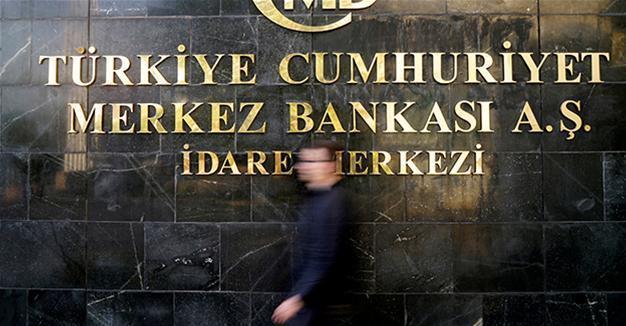Turkish Central Bank signals unorthodox ways to continue in bid to prop up lira
ANKARA

REUTERS photo
Turkey’s Central Bank has signaled it will continue to adopt unorthodox ways to support the Turkish Lira, while also revising its inflation forecasts upward.The lira has fallen more than 7 percent in 2017, becoming one of the world’s worst-performing currencies, amid investors’ worries about the Central Bank’s independence to avoid taking decisive action to support the lira and tame inflation, and their concerns about the economic slowdown and political uncertainties.
The bank raised its one-week repo rate on Nov. 25, 2016, for the first time since 2014 but it has remained unchanged since then, as top officials have continuously voiced their opposition to any rate hikes in a bid to boost economic growth.
Instead, the bank has stopped holding one-week repos and raised overnight and last resort borrowing rates, pushing funding costs for banks higher without having to change the benchmark rate.
“We will continue to use these steps as long as necessary. It should be expected for this framework to continue for a certain time,” Central Bank Gov. Murat Çetinkaya said on Jan. 31, as quoted by Reuters.
“If no permanent and serious improvements are seen regarding inflation expectations in the foreseeable future, it seems tightening will continue,” he told a news conference to announce the bank’s quarterly assessment of the inflation outlook.
Despite some concerns in the market, the lira rebounded to 3.8 from a historic low, as many analysts believed that the worst was over for the currency in the short-term and that the bank had taken a number of key steps.
The bank made uncovered hikes of 200 basis points in recent weeks.
The lender is still aiming to eventually provide funding via a single rate, rather than the multiple rates it is using now, but it will only make the shift when conditions are suitable, Çetinkaya said.
“Simplification will be our preference once the right framework is set up and volatility has died down,” he added.
Inflation outlook revised upward
The bank raised its inflation forecast for the end of 2017 from 6.5 to 8 percent in its previous report. Its forecast for inflation at the end of 2018 stands at 6 percent.
The initial indicators have showed that the inflation rate continues to increase amid the declines in the lira’s value and the fluctuations in the food prices, according to the bank.
“Risks are rising, but the critical point is that monetary policy is having the necessary effect,” Çetinkaya said, adding that the bank might take additional measures if needed and would use all available tools.
“Given a tight policy stance that focuses on bringing inflation down, inflation is expected to converge gradually to the 5 percent target. Inflation is likely to be 8 percent in 2017, and stabilize around 5 percent in 2019 after falling to 6 percent in 2018,” he said.
The bank also increased the bank’s food inflation forecast from 7 to 9 percent.
Ratings agency Fitch downgraded Turkey’s sovereign debt to “junk” on Jan. 27, snuffing out its last remaining investment grade, hours after Standard & Poor’s lowered its outlook from “stable” to “negative.”
Çetinkaya described S&P’s report as “hurried” and dismissed concern about the bank’s independence, saying its future steps would bring an end to such discussions.
















